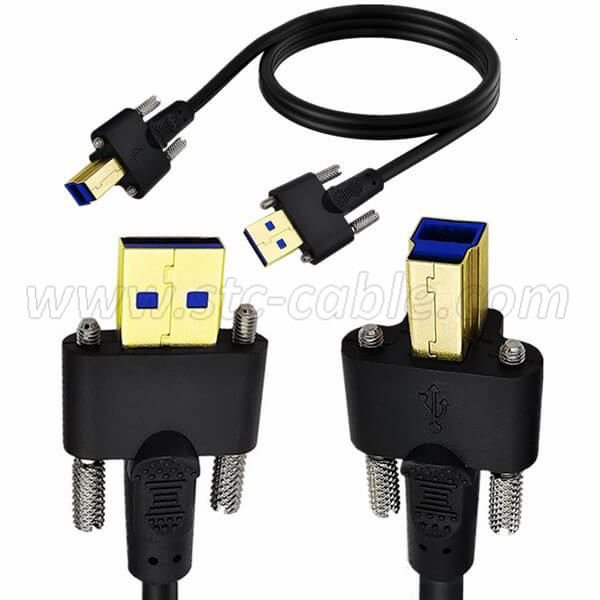What is USB 3.0 type b used for?
USB 3.0 Type-B connectors are primarily used for connecting large devices to computers. Here are some common applications:
1. Printers: USB 3.0 Type-B is often used to connect printers to computers.
2. External Hard Drives: It’s also used for connecting external hard drives to computers.
3. Scanners: Scanners typically use USB 3.0 Type-B connectors.
4. Other Devices: USB 3.0 Type-B can be found on various peripherals and devices that require high-speed data transfer.
Keep in mind that USB 3.0 Type-B connectors are visually almost square and are less common than other USB types like USB-C or Micro-USB.
What's the difference between USB 2.0 type b and USB 3.0 type b?
Let’s explore the differences between USB 2.0 Type-B and USB 3.0 Type-B connectors:
1. Transfer Speed:
USB 2.0: It provides a maximum transfer rate of 480 Mbps.
USB 3.0: Offers significantly faster data transfer speeds, up to 5 Gbps (about 10 times faster than USB 2.0)
2. Physical Appearance:
USB 2.0 Type-B: Visually almost square, commonly used on large devices like printers and scanners.
USB 3.0 Type-B: Also visually square, but with blue inserts. It’s found on newer devices and provides higher speeds
3. Compatibility:
USB 3.0 Type-B receptacles accept USB 2.0 and earlier plugs, but USB 3.0 Type-B plugs won’t fit into USB 2.0 and earlier receptacles.
In summary, USB 3.0 Type-B offers faster data transfer and improved power efficiency compared to USB 2.0 Type-B. If you’re connecting large devices, consider USB 3.0 for better performance!
What is the USB 3.0 type b connector structure?
The USB 3.0 Type-B connector, also known as USB3 ICC B, has a distinct structure compared to its predecessors. Here are the key details:
1. Pin Configuration:
Older generations of Type-B connectors have four pins.
Standard USB 3.0 Type-B connectors have nine pins.
2. When looking at the connector on a cable:
Pins are numbered 1-4, ascending clockwise from the top left in the central rectangular portion (common to all generations).
USB 3.0 adds a row of pins above, numbered 9-5, descending from the left
3. Compatibility:
USB 3.0 Type-B is not backward compatible with USB 2.0 Type-B receptacles
USB 3.0 Type-B connectors provide faster data transfer speeds and are visually square with blue inserts. If you’re connecting large devices, consider using USB 3.0 for improved performance!
Send your message to us:
Post time: Jul-05-2024
